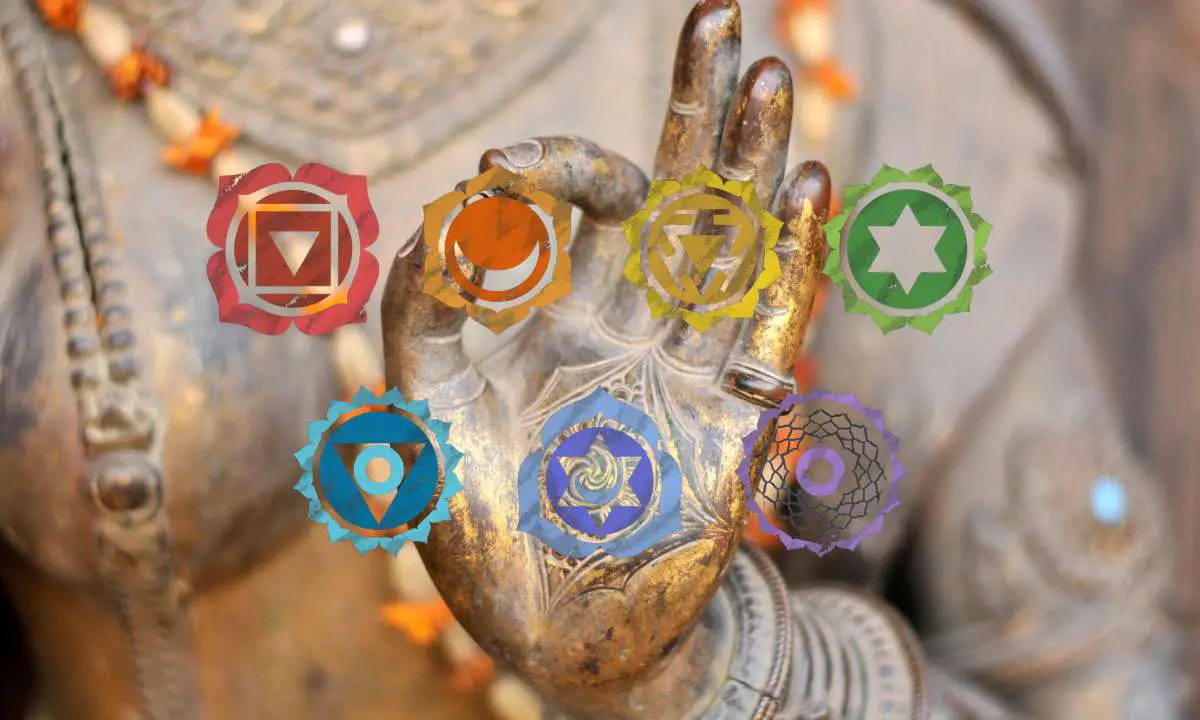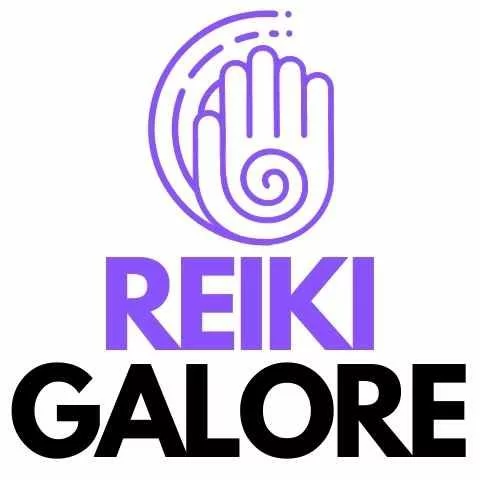Unlock the secret to harmonizing your body, mind, and spirit with Mudras for Chakras! Ever wondered how those ancient hand gestures could transform your energy centers?
We’ve got the lowdown on Mudras and Chakras, offering practical techniques and insider tips to unleash your inner zen. Discover the power of hand yoga and embark on a journey toward balance, vitality, and cosmic vibes. Get ready to say goodbye to imbalances and hello chakra bliss!
Introduction to Mudras for Chakras
What are Mudras and Chakras?
Mudras are hand gestures that have been used in Hinduism and Buddhism for centuries as a form of meditation. These hand gestures are believed to help channel energy throughout the body and mind, leading to a sense of inner peace and tranquility.
On the other hand, chakras are energy centers located in our bodies that regulate physical, emotional, and spiritual health. The practice of balancing these chakras by utilizing mudras has become increasingly popular in the modern world.
The Importance of Balancing Chakras for Overall Well-being
Balancing your chakras is essential for maintaining overall health and well-being. Each chakra is responsible for regulating different aspects of our lives, including our emotions, thoughts, behavior, and physical health.
Imbalances in these chakras can lead to various physical or emotional issues such as anxiety, depression, or even chronic diseases. Therefore keeping your chakras balanced not only keeps you fit physically but also helps improve mental wellness.
How Mudras Can Help Balance Chakras
Mudra meditation helps channel energy flow from one’s fingertips throughout the body with ease while supporting better concentration during meditation practices or yoga postures.
The specific channels each mudra stimulates will vary depending on the intention behind it – whether it’s relaxation or boosting immunity against illnesses – but they all work towards achieving balance within your life force energy systems called prana (energy).
With regular practice over time using mudra meditations; one can maintain deeper clarity about their own feelings/emotions resulting in greater self-awareness leading to harmony within all areas of life such as relationships with others at home or at work!

Mudras for Root Chakra
Description of Root Chakra and Its Significance
The root chakra, also known as the Muladhara chakra, is located at the base of the spine. It represents our foundation, stability, and grounding. The root chakra governs our basic needs such as food, shelter, safety, and security.
When this chakra is balanced, we feel a sense of stability and security in our lives. However, when it’s imbalanced or blocked, we may experience feelings of anxiety or insecurity.
Mudra for Grounding and Stability
The mudra for balancing the root chakra is called the Mula Bandha mudra. To perform this mudra, sit in a comfortable position with your back straight.
Place your hands on your knees with palms facing upwards. Bring your attention to the base of your spine and imagine a red glowing ball of energy there.
Next, contract your pelvic floor muscles by squeezing your anus as if to hold back urine or gas. Hold this contraction for a few seconds while inhaling deeply through your nose.
Release the contraction while exhaling slowly through your mouth. Repeat this process several times while focusing on the energy at the base of your spine.
Benefits of Practicing Root Chakra Mudra
Practicing Mula Bandha mudra can bring about many benefits such as increased feelings of security and stability in life.
This mudra can help you connect with Earth’s energy which helps in grounding yourself during stressful times or events that might cause anxiety like public speaking events or job interviews.
It also helps to balance out emotions related to fear & anger by improving focus & concentration levels so that you can face any situation without getting overwhelmed by it.
In addition to these benefits; practicing Mula Bandha Mudra can lead to an overall sense of well-being, as it helps to improve physical and mental balance, reducing anxiety and stress levels.
Mudras for Sacral Chakra
The sacral chakra, located in the lower abdomen, is associated with creativity, emotions, and sensuality. When this chakra is balanced, we feel confident in our relationships and are able to express ourselves freely. However, when it is blocked or unbalanced, we may experience issues such as emotional instability or a lack of creativity.
This is where mudras come in to help balance the sacral chakra. One powerful mudra for the sacral chakra is the Vajrapradama Mudra (Thunderbolt Confidence Mudra).
To practice this mudra, sit comfortably with your back straight and your hands on your knees. Bring your palms together in front of your chest with fingers interlaced except for the index fingers which should point upwards.
Focus on your breath and visualize an orange ball of energy at the location of your sacral chakra. As you hold this pose, repeat affirmations such as “I am creative” or “I embrace my sensuality”.
This mudra helps to boost confidence and ignite creative energy within you. Practicing mudras regularly can have numerous benefits for our well-being.
When we balance our sacral chakra through mudras like Vajrapradama Mudra, we can improve our ability to connect with others on a deeper level by being more open and expressive in relationships.
We may also feel more comfortable expressing ourselves creatively through art forms like dance or painting that allow us to tap into our emotions freely.
Another great benefit of balancing the sacral chakra through mudras is improved sexual health. This chakra plays a key role in sexual function and intimacy; therefore balancing it can enhance one’s sensuality and improve libido levels.
Overall, practicing mudras for the sacral chakra can lead to increased self-confidence, improved relationships with others, greater creative expression, better emotional regulation, and improved sexual health. Take some time out of your day to practice Vajrapradama Mudra and see the positive effects it can have on your sacral chakra and overall well-being.
Mudras for Solar Plexus Chakra
The solar plexus chakra, also known as the Manipura chakra, is located in the upper abdomen, above the navel. It is associated with personal power, confidence, and self-esteem.
When this chakra is balanced, one feels confident in themselves and their abilities. However, when it is blocked or unbalanced, it can lead to feelings of insecurity and lack of self-worth.
One mudra that can help balance the solar plexus chakra is the Prana Mudra. To perform this mudra, touch the tips of your thumb and ring finger together while keeping your other fingers extended.
This mudra helps to increase vitality and energy within the body while also promoting a sense of inner strength and confidence. By practicing this mudra regularly, one can improve their overall sense of personal power and confidence in themselves.
The Benefits of Practicing Solar Plexus Chakra Mudra
In addition to promoting feelings of confidence and personal power, practicing solar plexus chakra mudras can have numerous other benefits for one’s physical and emotional well-being.
For example: – Improves digestion: The solar plexus chakra is closely connected to digestion.
When this chakra is blocked or unbalanced, it can lead to digestive issues such as bloating or constipation. By practicing mudras that help balance this chakra, one may see improvements in digestive health.
– Reduces stress: The Prana Mudra specifically has been shown to reduce stress levels by calming the mind and body. This makes it a great mudra to practice when feeling overwhelmed or anxious.
– Boosts self-esteem: As mentioned earlier, balancing the solar plexus chakra can lead to increased feelings of self-worth and confidence in oneself. By practicing mudras that focus on this area, one can cultivate a stronger sense of self-esteem.
Overall, practicing mudras for the solar plexus chakra can have a profound impact on one’s physical and emotional health.
By incorporating these practices into your daily routine, you can improve your overall sense of confidence and personal power while also promoting greater well-being.
Mudras for Heart Chakra
The heart chakra, also known as Anahata, is located in the center of the chest and represents love, compassion, and forgiveness. This chakra is considered the bridge between the physical and spiritual realms and is associated with emotional balance and well-being.
When this chakra is blocked or unbalanced, it can manifest as feelings of grief, anger, jealousy, or fear.
To help balance the heart chakra and connect with its energies of love and compassion, practicing mudras can be highly effective. One of the most popular mudras for this purpose is called Hridaya Mudra.
To practice this mudra, simply bring your palms together at your heart center with your fingers extended upward. Then cross your thumbs down toward your sternum to form a triangle shape at your fingertips.
Hridaya Mudra helps to balance emotions by promoting a sense of peace and calm within oneself. It encourages self-love and self-acceptance while also fostering a deeper connection to others through empathy and compassion.
Practicing this mudra regularly can help alleviate feelings of loneliness or isolation while promoting greater harmony in relationships with others. Another powerful mudra for balancing the heart chakra is called Padma Mudra (Lotus Mudra).
This mudra involves interlacing all ten fingers in front of your chest so that they form a lotus flower shape. The thumbs should be touching each other at their tips while the fingers are spread wide apart.
Padma Mudra represents the purity of mind and heart while encouraging openness to new experiences. It helps one connect with their innermost thoughts and feelings while cultivating an attitude of unconditional love toward themselves and others.
Practicing Padma Mudra regularly can facilitate healing emotional wounds from past traumas or conflicts by promoting forgiveness towards oneself or others involved.
Overall, using these two powerful mudras can significantly enhance one’s connection to the heart chakra’s energies of love, compassion, and forgiveness.
Mudras for Throat Chakra
Description of Throat Chakra and its Significance
The throat chakra is located in the neck area and represents communication, self-expression, and speaking truthfully. When this chakra is balanced, we are able to communicate effectively with others and express ourselves in a clear and concise manner.
We also have the ability to listen actively, which is an important aspect of communication. However, when the throat chakra is blocked or imbalanced, we may struggle with expressing our thoughts and feelings.
We may also have difficulty listening to others or communicating effectively in relationships. This can lead to feelings of isolation and disconnection from others.
Mudra for Communication, Self-Expression, and Speaking Truthfully
The mudra for balancing the throat chakra is called the Vishuddha mudra. To perform this mudra, sit comfortably with your spine straight.
Touch your thumb to your pinky finger while keeping your other fingers extended. Then place your hands on your lap with palms facing up.
This mudra helps to activate the throat chakra by promoting open communication and self-expression. It encourages us to speak truthfully while also listening actively to others.
Benefits of Practicing Throat Chakra Mudra
Practicing the Vishuddha mudra can have many benefits for our overall well-being. By balancing our throat chakra, we are able to communicate more effectively with others while also expressing ourselves in a clear and concise manner.
We may also experience improved relationships as a result of better communication skills. Additionally, practicing this mudra can help us feel more connected to ourselves and others by promoting open expression of thoughts and emotions.
Conclusion
Incorporating mudras into our daily routine can be a powerful tool for balancing our chakras and promoting overall well-being.
By understanding the significance of each chakra and practicing specific mudras, we can cultivate a deeper sense of inner peace, harmony, and connection.
Remember to be patient with yourself as you begin to incorporate these practices into your life. With consistent practice, you may notice a positive shift in your physical, emotional, and spiritual well-being.



